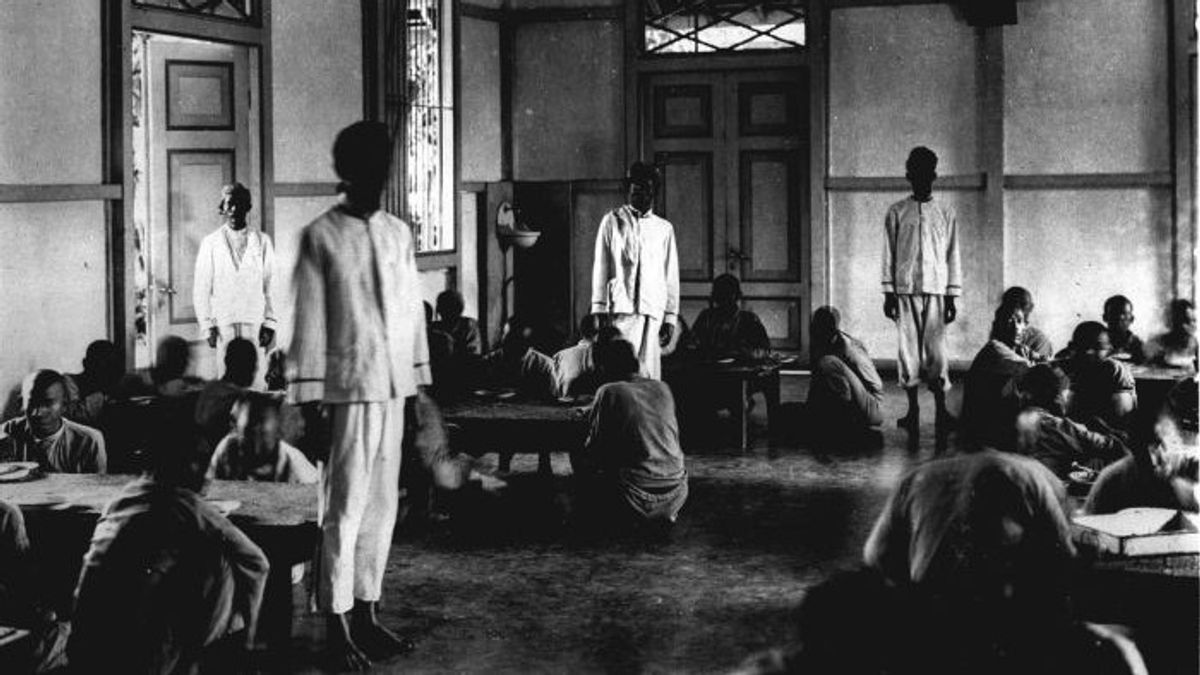JAKARTA - Mental disorders are diseases that are as old as the civilization of the Archipelago. People with mental disorders (ODGJ) appear with various causes. One of them is because of the plague, be it the bubonic plague, the Spanish flu to tuberculosis (TB).
Narratives related to ODGJ in the history of the archipelago have been present in the famous stories of Mahabharata and Ramayana. In both stories, ODGJ becomes part of a character, such as Srikandi Edan (crazy) and Gatotkaca Gandrung.
When Gatotkaca Gandrung falls in love his behavior changes to childish, funny and eccentric. This description provides information that ODGJ has been part of the Nusantara community for centuries.
Even though ODGJ has been present for a long time, the problem of handling ODGJ in the community is not as good as it is today. When they find a relative or colleague with a mental disorder, the common people tend to treat them as if they were influenced by evil spirits or being manipulated.
Even ODGJ is often considered as an intermediary between humans and the spirit world. As a result, paranormal services (shamans) are used to free ODGJ.
In the ritual of exorcism of evil spirits, ODGJ usually get physical torture, either being beaten or kicked. If these actions are not enough, ODGJ will immediately be put in shackles.
“Patients are 'pasung' tied up, or chained, or put in cages. This is done if the patient is dangerous to the environment and or to himself. This practice is spread all over Indonesia,” said Willy F. Maramis and Albert A. Maramis in the book Notes on Mental Medicine Edition 2 (2009).

"If the sufferer is not dangerous, then it is not uncommon to see people with mental disorders in minimal clothing, some even completely naked, wandering around the village (sometimes in the city) while looking for food on the side of the road or in the trash and becoming a spectacle or even the object of public jokes who do not understand the condition of the sufferer," he added.
Dipasung is the last option. This action was taken so that ODGJ would not disturb the surrounding environment. Moreover, several records state that ODGJ is often caught lashing out at anyone in front of him.
However, this option is proof of information about the importance of mental health that was not well known to the natives of the past. In addition, there are no medical facilities, medical personnel, or psychiatrists.
“This condition continued until finally on May 21, 1831. The Dutch East Indies government made a resolution which was considered quite influential in the process of transforming mental health services in Indonesia. In Resolution of 21 May 1831 No. 1 Article 1 states that every major hospital in Weltevreden Jakarta, Semarang and Surabaya will be provided with rooms to treat people with mental disorders,” said Denny Thong, author of the biography of Mr.
ODGJ develops because of the epidemic
The Dutch colonial government had considered the ODGJ phenomenon in the Dutch East Indies as a serious problem. However, a series of efforts to break the chain of ODGJ are not optimal.
The number of ODGJ statistics in the archipelago continues to increase. The increase was triggered by many things. One of them is the emergence of disease outbreaks. Since the end of the 19th century, the archipelago had been hit by various kinds of epidemics.
Call it the bubonic plague, cholera, Spanish flu, to tuberculosis. The presence of the plague was disastrous. Because when the epidemic strikes, poverty increases, until the ODGJ phenomenon appears.
This catastrophe further showed the dilapidated Dutch colonial leadership, especially in providing adequate mental health facilities. “Mental diseases also hit poor communities affected by epidemics throughout the Indies. The colonial government was overwhelmed. Psychiatric facilities are no longer adequate."
"A psychiatrist at the Indische Artsen Nederlands School in Surabaya, Dr. Van der Schaar, found in his investigations dating back to 1930 that across Java there are 1,377 mentally ill people each year held in prison. Between 250 and 300 people are added to this list each day. These figures only cover Java but do not include other regions such as Sumatra and Sulawesi,” added Maiza Elvira in the book Indonesia and COVID-19: Multi-Aspect and Sectoral Views (2020).
Meanwhile in Sumatra, the Head of the Department of Public Health of the Dutch East Indies, WF Theunissen, found that along with the emergence of the TB epidemic, mental illnesses emerged. ODGJ in Sumatra is growing rapidly. Because of this, the Dutch colonial government in Sumatra was overwhelmed and confused about the outbreak of ODGJ.

Even so, it's not just the epidemic that is the main factor in the spread of ODGJ. War has also become one of the estuaries for the emergence of many ODGJs. Take the Aceh War (1873-1904), for example.
After the Aceh war, many local residents experienced psychological depression and became ODGJ. This fact refreshes the memory that war is not just a narration of win-lose.
The impact of the war itself can take many lives. Even those who are still alive will experience deep trauma to become ODGJ. All of this is armed with memories of the cruelty of war.
“Jelte Rep (Dutch television journalist) wrote that as a result of the Aceh War, many Acehnese experienced psychological depression and went crazy. A psychiatrist who conducted the examination concluded that of the 700,000 inhabitants of Aceh at that time, 1,000 were more severely insane."
"The Dutch East Indies government established a mental hospital in Sabang, which is the largest hospital in Indonesia. When World War II broke out in 1939, there were approximately 1,400 insane people who were treated in the hospital," concluded Rosihan Anwar in the book Small History “Petite Histoire” Indonesia Volume 1 (2004).
*Read other information about NUSANTARA HISTORY or read other interesting articles from Detha Arya Tifada.
Other MEMORIESThe English, Chinese, Japanese, Arabic, and French versions are automatically generated by the AI. So there may still be inaccuracies in translating, please always see Indonesian as our main language. (system supported by DigitalSiber.id)











